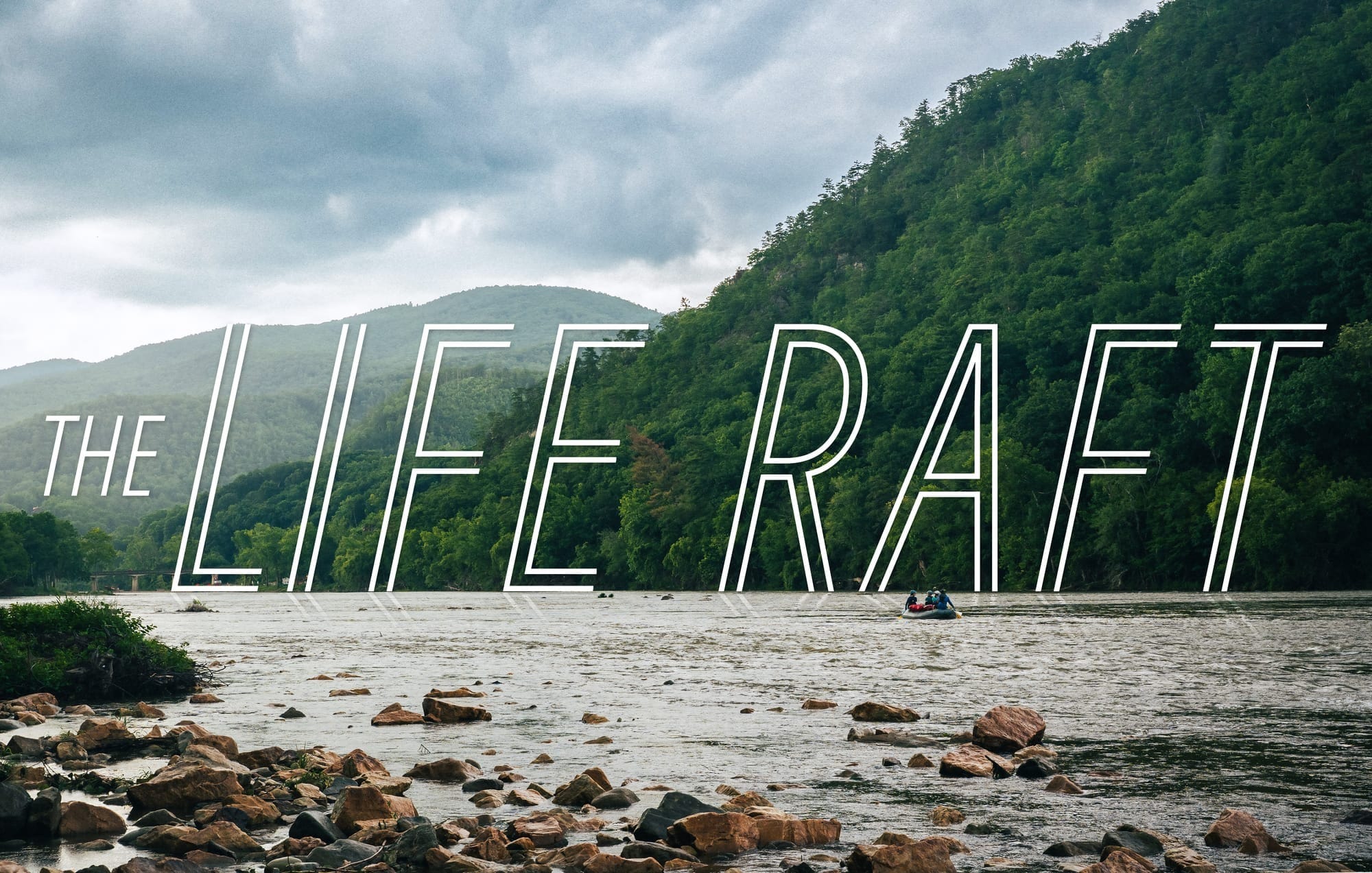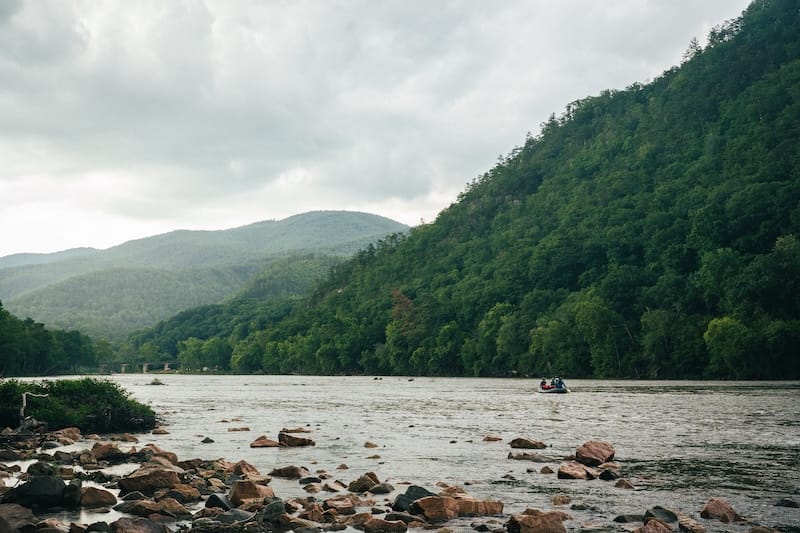
Hurricane Helene turned Western North Carolina's biggest river into a menace—yet a year later, it's clear that the French Broad is still the region's lifeblood. In Issue No. 1, our "Guide" explores this iconic Southern waterway and shows why it's still embraced by the communities that are rebuilding after suffering its wrath. See all the French Broad stories here, and be sure to get the full print issue in our shop.
As we push the raft into the French Broad River, the huge watercraft feels so unwieldy that I wonder if we can pull off the expedition. Just prepping has been an ordeal: first rolling the raft end over end to my car to carry it to the water, as even deflated it is too big for me to lift alone; then laboring for an exhausting hour with a hand pump to inflate it; then working through extensive checklists of other tasks to rig it. Now that we’re finally on the water, nervousness seizes me about captaining the boat through hazardous Class IV whitewater. I’ve navigated such rapids before, but it’s been years.
I should say: the raft was never a “good” idea. When I proposed buying a 13.5-foot whitewater craft, designed for commercial outfitters to ferry tourists down rapids, my friends expressed appropriate skepticism. Would we ever use it? Did we even have the skills to? Wasn’t it just an expensive way to injure or kill ourselves?
Five years later, I can’t remember exactly what words I used to try to convince them. But I know what I was really saying: Yes, this thing is impractical. Yes, it’s too huge for any one of us to use alone. But it will force us to depend on each other. It is the embodiment of friendship. And that sell worked. A half-dozen of us pitched in a couple hundred bucks apiece.
This post is for paying subscribers only
Subscribe now and have access to all our stories, enjoy exclusive content and stay up to date with constant updates.
This post is for paying subscribers only
Subscribe to get access to this and all premium content.


